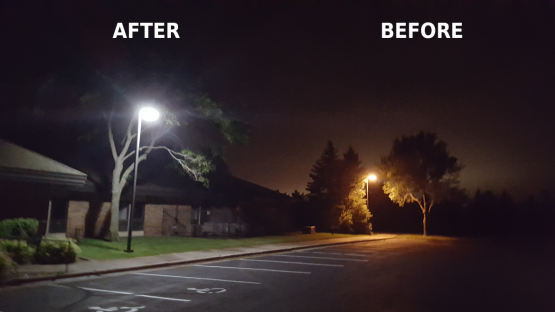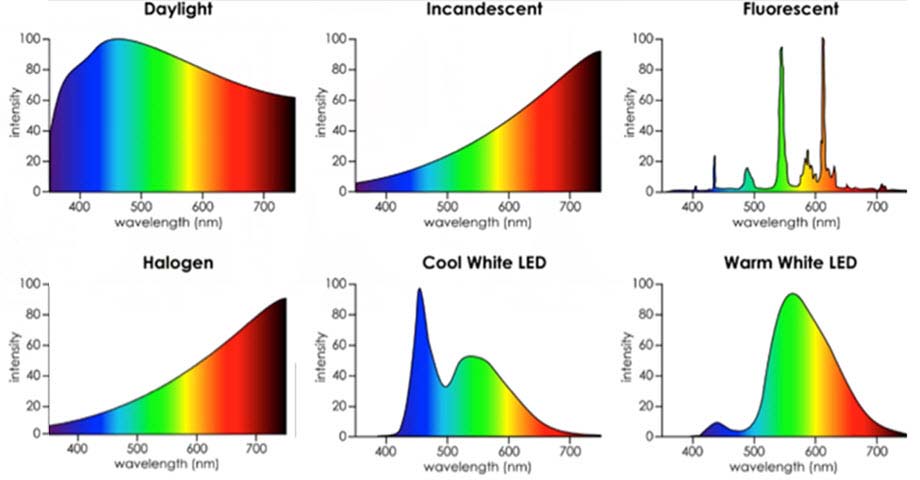I have the same lights. Just don't stare at them

Avoid looking at them is part of keeping your eyesight, also the refractory light will have harmful effects too when looking at them.
How to protect your eyes from the harm of blue LED light - UW–Madison Information Technology
When LED street lights came out there was a huge backlash due to the ill health effects on the eyes.
Are LED Lights Bad for Your Health? > ENGINEERING.com
And the US Department of Energy reported the facts of the ill health in these LED street lights here.
https://www.energy.gov/sites/prod/files/2018/04/f50/Street Lighting and Blue Light FAQs.pdf
The report talks about the ill health from the blue light spectrum we see as white light with our eyes. The short-wave-length at the blue light spectrum range is damaging. They believe 4000K and higher.
BUT, in the DOE report, there is an improvement mentioned on the last page of 18.
How many LED lights with CCT of 5000 K or higher have been installed outdoors?
Although the actual number is unknown, it´s believed that relatively few such LED lights have been installed outdoors in the U.S. Thereï½´s no known documented inventory of installed outdoor LED products categorized by CCT, and estimates differ by application. 23 There were a few smaller-scale pilot studies and other installations involving products with CCT ≥ 5000 K in the first few years of LED outdoor lighting installations,
but the street and roadway lighting community quickly converged around a warmer 4000 K as soon as that CCT became widely affordable (around 2010). From then to 2016, the vast majority of municipalities and utilities (including, for example, the cities of Seattle, Los Angeles, Las Vegas, Boston, New York, New Orleans, Detroit, Kansas City, and many others) favored 4000 K CCT products for LED street and roadway lighting applications.
More recently, with continued improvement of the technology, a number of cities are now considering 3000 K and, in some cases, even lower CCTs. :thumbsup::thumbsup::thumbsup:
Why did early LEDs have CCTs of 5000 K or more?
High-CCT white LEDs were more available, more efficient, and less expensive than lower-CCT versions during the technologyï½´s early years. In PC-LEDs, narrow-band short-wavelength light produced by semiconductor material is passed through phosphors that converts most of it into other colors; the resulting light spectrum appears white to the human eye. Efficiency losses occur during the color conversion, and these losses are greater when creating warmer CCTs, translating into lower luminousefficacies (lumen output per watt of electrical input power). Because the early-production white LEDs were relatively low in efficacy, manufacturers emphasized sales of more-efficacious higher-CCT products. Since then, however, LED technology has advanced to the point where even warmer-CCT products are highly efficacious, especially when compared to traditional lamp technologies. However, even today a higher-CCT LED continues to be more efficacious than a similar LED at lower CCT, all other things (e.g., color quality and color rendering ability) being equal.
Again, I'm not an LED basher. Just want people to be informed on the types of LEDs out there and to choose the SAFE LEDs for their health sake, especially if you plan on being illuminated with them for hours at a time.
So, with our 25W tractor lights, we have the options of incandescent (glow worm effect :confused2: ), halogen (bright and normal for the eyes

) and LED (3000K or less is safe and best

).






